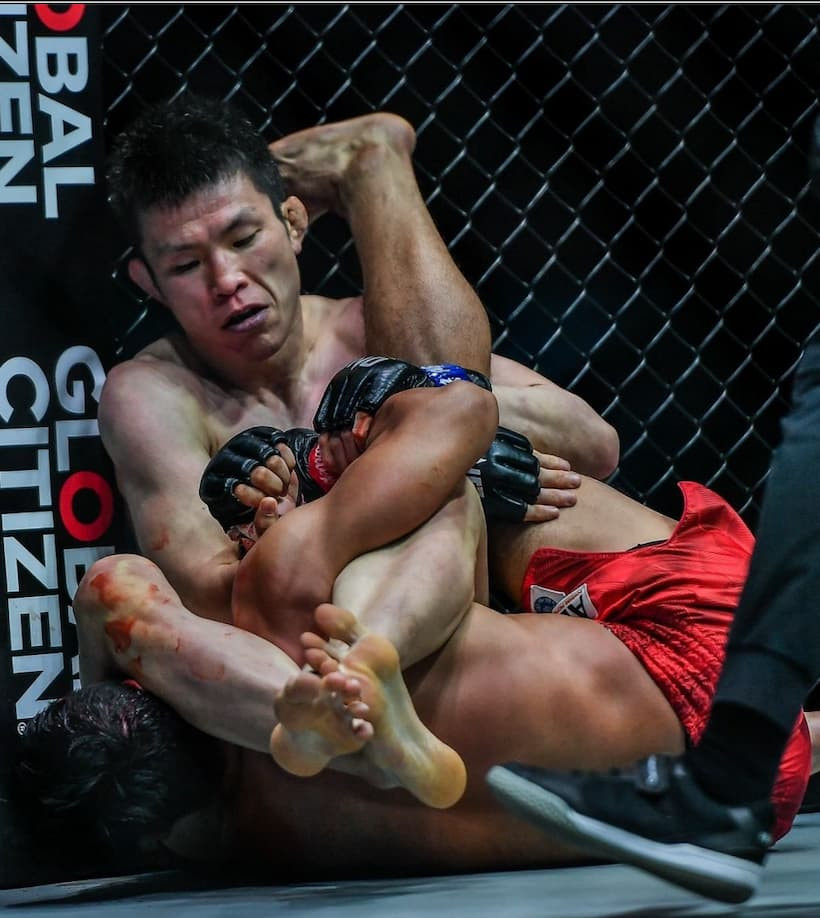Is Grappling for MMA Different?

Grappling is not the most glamorous form of combat. When you imagine the hero in an action movie fighting the villain’s top henchman, they’re usually landing uppercuts and roundhouse kicks or throwing each other through walls and windows. These fights also tend to end with a picturesque right hook.
In reality, street fights (and even MMA fights) tend to be not only far more chaotic; they also tend to involve far more grappling than film and television would have you believe. While it’s impossible to say what percentage of fights end up on the ground, anyone who wants to have all the tools necessary to defend themselves will need to have some familiarity with grappling to be ready for anything.
Is Jiu-Jitsu Just Grappling?
No. Jiu-jitsu is a comprehensive martial art and system for close combat. It does not only involve grappling, though grappling, ground fighting, and submission holds tend to make up a large part of most jiu-jitsu gyms’ curricula.
Does Jiu-Jitsu Allow Strikes?
It depends on the setting. In the earliest days of jiu-jitsu, Grandmaster Hélio Gracie used any means necessary to submit opponents, including strikes. After all, he was fighting in no holds barred matches and showing the world how effective Gracie jiu-jitsu was against other styles of fighting. What made Gracie jiu-jitsu so effective was not the use of brute strength, but efficiency of movement to conserve energy and ingenious techniques that allowed them to wear down and beat opponents who were far bigger than them. A core component of this was ground fighting. On the one hand, you don’t waste energy throwing punches and kicks. On the other, if your opponent can’t use their whole body to strike, they won’t be able to generate the same amount of power.
Though it was designed as a complete martial art system, when the first organization to oversee sport jiu-jitsu (the Jiu-Jitsu Federation of Guanabara) was founded in 1967, it did not allow strikes. To this day, sport jiu-jitsu does not allow strikes. Consequently, gyms that train students to participate in tournaments do not generally focus on strikes.
Not all jiu-jitsu gyms train students to fight in jiu-jitsu tournaments. Some are more focused on self-defense and real-world situations. These gyms do teach students how to strike. Similarly, some gyms teach jiu-jitsu techniques as part of a larger curriculum designed to give fighters a background in several styles. These mixed-martial arts gyms most certainly allow striking. In many ways, MMA fights are similar in spirit to the no holds barred matches in which Grandmaster Hélio Gracie participated back in the 1930s and 1940s.
What Makes MMA Grappling Different?
For a long time, most people would say that one of the key differences between MMA grappling and sport jiu-jitsu grappling involved strikes. The former allowed them. The latter did not. Another difference was leg locks. As Joe Rogan and Khalil Rountree said in a clip from the Joe Rogan Experience, fighters typically shied away from leg locks in an MMA setting because many of these moves require both hands, meaning you’re not going to be able to defend against punches. In other words, going for a leg lock was a surefire way to get yourself knocked out.
Within the past few years, however, leg locks have become more common in MMA fights because multiple fighters have shown that they can be executed quickly, leaving opponents without time to respond. Additionally, anyone who is familiar with the power of a leg lock will likely tap early if you put them in a compromising position because fighting too hard against it once you’re already wrapped up can lead to knee injuries and knee injuries can leave you sidelined for months.
Leg Locks and Jiu-Jitsu
Most jiu-jitsu gyms will wait to teach leg attacks for one of three reasons. First, jiu-jitsu is about gaining a dominant position over your opponent, and there are far more ways to establish a dominant position by controlling someone’s torso, neck, and arms. Consequently, most gyms will first teach techniques that focus on the upper half of the body.
Similarly, gaining control over the leg in a real-world fight is great if you can keep that control. However, if your opponent frees themselves and you don’t know techniques that focus on the other half of the body, it is going to be very difficult to win that fight.
Finally, if leg attacks are not done correctly, they can lead to serious injury. True, you are not worrying about the knee health of an assailant who has tried to jump you on the street, but you don’t want to injure someone from class who is just trying to learn self-defense. To avoid these types of scenarios, many instructors wait until students are more comfortable on the mat to incorporate leg attacks.

